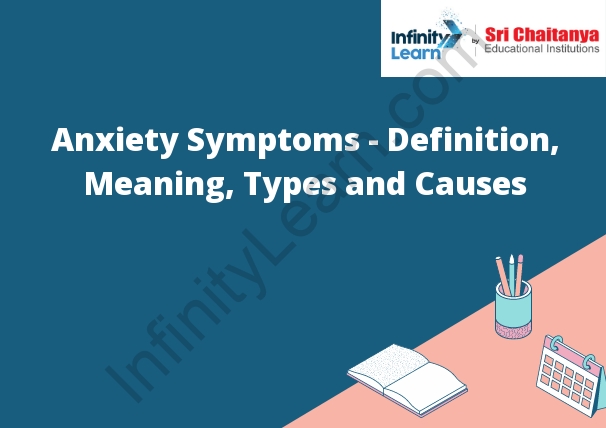Table of Contents
Definition of Anxiety
Anxiety is a feeling of worry, nervousness, or unease. It can be mild or intense, and it can last for a short or long time.

What is Meant by Anxiety?
Anxiety is an emotion characterized by feelings of tension, worry, or fear. It is often accompanied by physical symptoms, such as a racing heart or nausea. Anxiety is normal in certain situations, such as before an important test or meeting. However, when it becomes excessive or chronic, it can be debilitating.
What are the Various Kinds of Anxiety?
There are various types of anxiety that people can experience. The most common are generalized anxiety disorder (GAD), panic disorder, and social anxiety disorder.
GAD is characterized by excessive worry and anxiety about everyday things, such as work, money, health, and relationships. People with GAD may have difficulty controlling their worry and often have unrealistic fears about the future.
Panic disorder is characterized by sudden, intense episodes of terror that strike for no apparent reason. These panic attacks can cause sweating, heart palpitations, shortness of breath, and other symptoms.
Social anxiety disorder is characterized by overwhelming anxiety and self-consciousness in everyday social situations. People with social anxiety may worry for days or weeks before an event, and often experience intense fear during social interactions.
Generalised Anxiety Disorder
People with generalised anxiety disorder (GAD) experience persistent and excessive worry and anxiety about a range of everyday problems and activities, even when there is little or no reason to worry. The worry and anxiety can be so severe that it interferes with daily activities.
People with GAD often have physical symptoms, such as tension headaches, muscle aches, and fatigue. They may also have problems with sleep, concentration, and digestion.
Panic Disorder
Panic disorder is a mental illness characterized by recurring panic attacks. Panic attacks are episodes of intense fear and anxiety that reach a peak within minutes and include at least four of the following symptoms:
* Racing heart
* Sweating
* Shaking
* Feeling short of breath
* Feeling like you’re going to die
Most people with panic disorder have at least one attack a month, but some people have them several times a week.
People with panic disorder often worry about when the next attack will occur and spend a lot of time trying to avoid situations that they think might trigger an attack. This can lead to problems in their everyday life, such as avoiding social situations, not being able to hold down a job, or avoiding activities they once enjoyed.
Treatment for panic disorder includes therapy, medication, and self-help strategies.
Social Anxiety Disorder
Social anxiety disorder is a mental disorder characterized by an intense fear of social situations. People with social anxiety disorder may avoid social situations altogether, or may endure them with intense anxiety. The disorder can manifest in a number of ways, including a fear of public speaking, eating in public, or interacting with strangers.
Mediation-Induced Anxiety Disorder
A person with mediation-induced anxiety disorder experiences anxiety symptoms only when they are in a mediation setting. This disorder is often caused by a person’s fear of not being able to control their thoughts or feelings during meditation, which can lead to extreme anxiety.
Selective Mutism
Selective mutism is a disorder that affects communication. A person with selective mutism usually speaks freely and fluently with family and close friends, but is unable to speak in certain settings, such as with people they don’t know or in public. Selective mutism usually begins before the age of 5.
There is no one cause of selective mutism, but it is often associated with anxiety. Children with selective mutism may feel overwhelmed or scared in certain situations and may be afraid of making a mistake or being judged by others.
There is no cure for selective mutism, but treatment can help people learn to speak more freely in certain settings. Therapists may help children with selective mutism learn how to relax and feel more comfortable in social situations. Parents can also help their children by providing support and encouragement.
Separation Anxiety
Disorder
This is a disorder that is characterized by excessive or unreasonable fear of being separated from a loved one or of being alone.
Specific Phobias
There are many different types of phobias. Some common phobias are:
• Acrophobia – Fear of heights
• Claustrophobia – Fear of enclosed spaces
• Agoraphobia – Fear of public places
• Cynophobia – Fear of dogs
• Hemophobia – Fear of blood
Agoraphobia
Anxiety disorder characterized by fear of open or public places where escape might be difficult.









